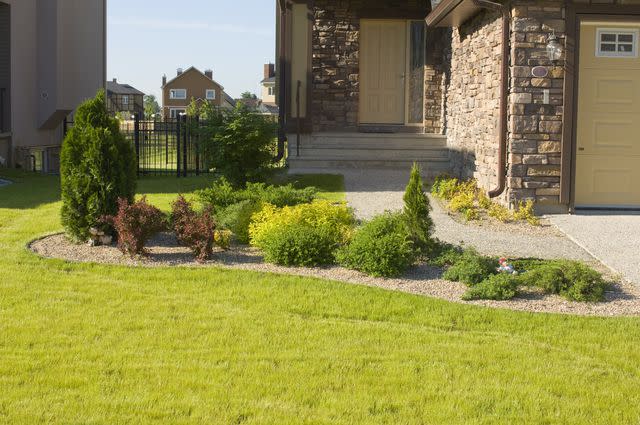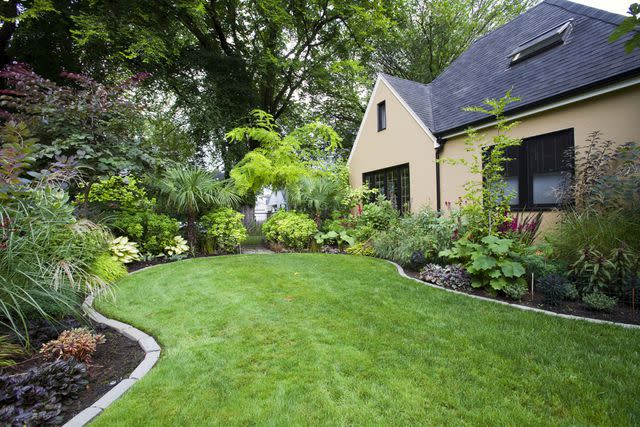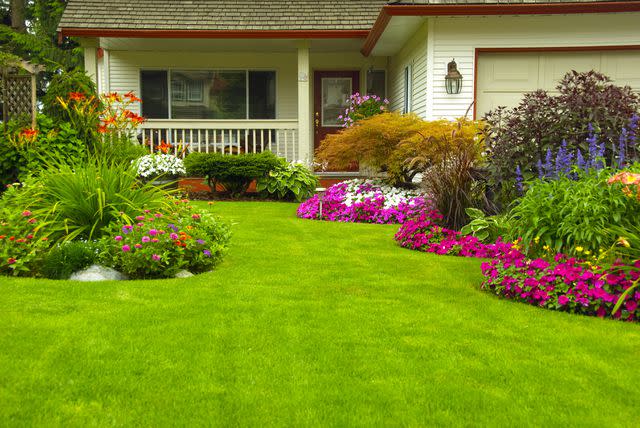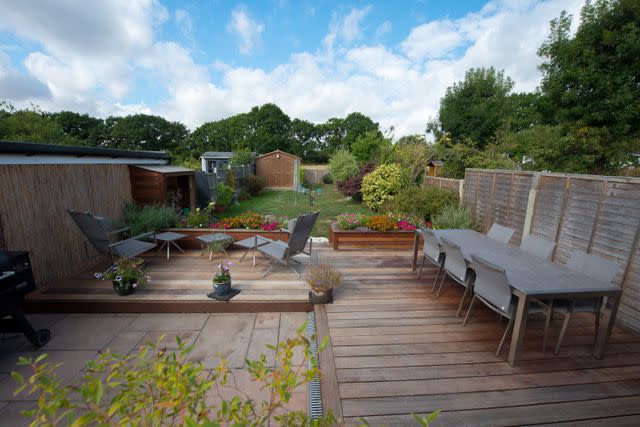7 Landscaping Mistakes You Should Avoid Making, According to Experts
Avoid these common landscaping pitfalls.
:max_bytes(150000):strip_icc():format(jpeg)/GettyImages-493884711-a53882dc87ce476ebf5806e2f60e66f1.jpg)
tab1962 / Getty Images
Gardening and landscaping can be a rewarding endeavor—transforming outdoor spaces into beautiful and functional retreats. However, without proper planning and consideration, common mistakes can detract from the overall beauty and functionality of your landscape.
We've gathered insights from seasoned experts in landscape architecture and design to highlight key mistakes to avoid and offer valuable advice for creating stunning outdoor spaces that stand the test of time.

IP Galanternik D.U. / Getty Images
Neglecting Essential Preparations
Failing to be transparent about budgets, schedules, and property boundaries can lead to costly mistakes. Award-winning landscape architect Jack Kiesel emphasizes the importance of honesty and thorough planning, including obtaining a scaled topographic survey to prevent property line disputes and costly errors. He advises setting clear budget expectations and avoiding premature celebrations before the landscape is fully completed.
“I have never heard anyone regret ordering a survey,” he said. “It saves a lot of heartache, costly revisions, and potential work stoppage from inspectors or angry neighbors.”
Underestimating Planting Needs
Landscape designer Melanie Rekola warns against skimping on plant beds and outdoor furniture space, as these elements provide balance and connection to nature. She also suggests ensuring adequate space for both plants and furniture, with plant beds at least 3 feet wide and ample room around outdoor furniture to prevent crowding.
“Avoid skinny beds as these look unbalanced and aren’t suitable for the plants to thrive in as there isn’t enough growing space,” she said.

Mint Images / Getty Images
Over-Landscaping
Principal architect Ralph Choeff cautions against over-landscaping, which can detract from the overall beauty of a project. He emphasizes the importance of harmony between landscaping and architecture, recommending a more refined look over an overly dense jungle-like effect.
“Too much or overgrown landscaping will take away from a project’s beauty, while proper and more formal landscaping will enhance the architecture,” he said. “The landscaping and the architecture must work together in harmony for a successful project.”
Ignoring Drainage Considerations
Landscape designer Rich Cording, Jr. highlights the significance of drainage planning, particularly in outdoor spaces. He stresses the importance of envisioning how landscaping will handle heavy rainstorms and ensuring proper pitch and drainage systems are in place to prevent water damage and erosion.
“The second thing to consider is where does the surface water go after it flows across one of these pitched outdoor surfaces,” he said. “There are many ways to catch the water, such as in a box drain, a strip drain, or a French drain, to name a few.”

can72 / Getty Images
Overlooking Important Vantage Points
Cording also advises considering key vantage points, such as views from kitchen windows and driveway entrances, when designing landscapes.
These views should be carefully framed and enhanced to create pleasing compositions and memorable experiences for homeowners and guests alike. Taking into account these often-overlooked perspectives can elevate the overall design and enjoyment of the landscape.
Not Planning for Patio Furniture
Most people designing a landscape want furniture suitable to enjoy the space, and it should be discussed in the planning stage of the project.
“Outdoor furniture needs to be planned for the piece of furniture itself, but also for room around it to walk by or access,” Rekola said. “For example, I see so many backyards with a swimming pool but there isn’t nearly enough patio space to walk by the sun loungers without falling into the pool!”
Deciding how the space will be used as well as having a general idea of the type of furniture you’d like is a good start. Then, take those ideas to your architect or landscape architect for fine-tuning.

John Keeble / Getty Images
Considering Long-Term Maintenance
Oftentimes, individuals are drawn to visually appealing plants or elaborate landscaping elements without fully understanding the time and effort required to maintain them. This oversight can result in overgrown or unkempt landscapes over time, leading to frustration and additional expenses in the future.
To avoid this mistake, it's essential to research the maintenance needs of plants and features before incorporating them into the design. Opting for low-maintenance plants and sustainable landscaping practices can help ensure a beautiful and manageable landscape for years to come.
In conclusion, landscaping mistakes can be costly and detract from the beauty and functionality of outdoor spaces. By heeding the advice of experienced landscape and architecture professionals and prioritizing proper planning, drainage considerations, and thoughtful design, homeowners can create stunning landscapes that enhance their enjoyment of outdoor living for years to come.
Read Next: Landscaping on a Budget: 10 Cheap Landscaping Ideas
Read the original article on The Spruce.

